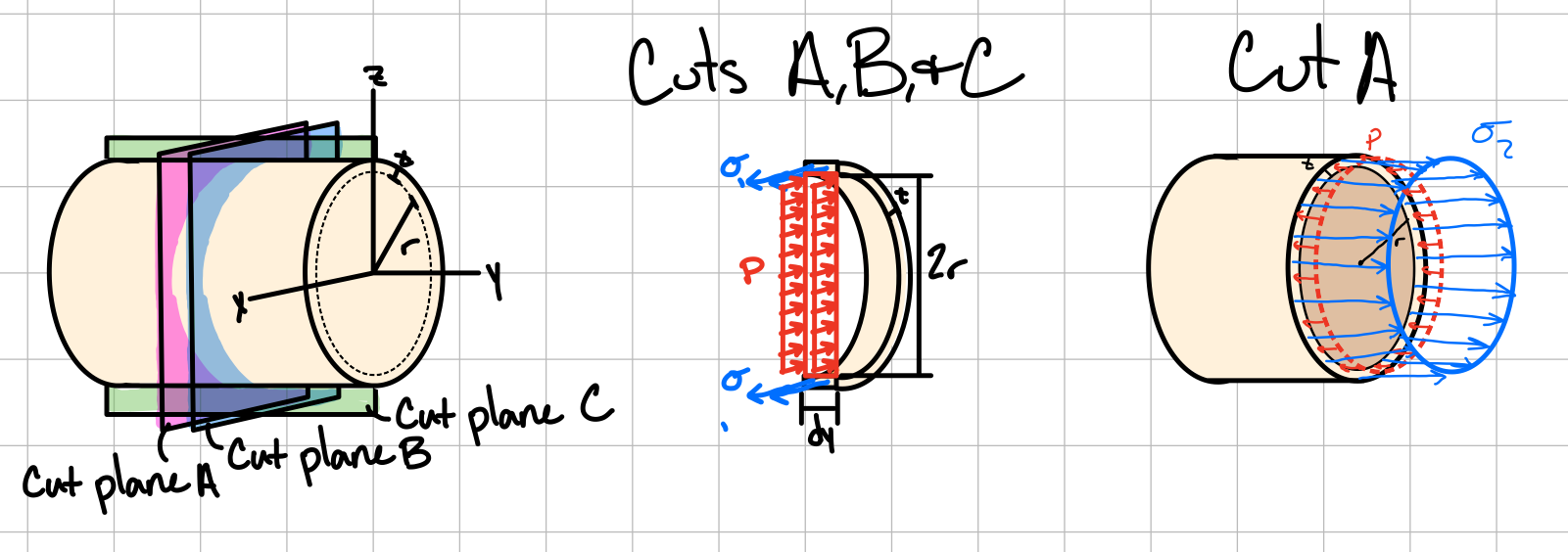Pressure Vessels
Thin-Walled Pressure Vessels
- Inner radius: \( r \)
- Wall thickness: \( t \)
- Thin walls: \( t//r <<1 \)
- Assume that stress distribution through the thin wall is uniform
- Pressure vessel contains fluid under pressure (\( p \)), usually called gauge pressure (i.e., \( p = \Delta p = p_i - p_o \)).
Cylindrical Vessels

Cylindrical pressure vessel behind Transportation Building.

Hoop (circumfrential) stress. #hp-str
Axial (longitudinal) stress. #axl-str

- Inner Surface: \( \sigma_r = -p \)
- Outer Surface: \( \sigma_r = 0 \)
